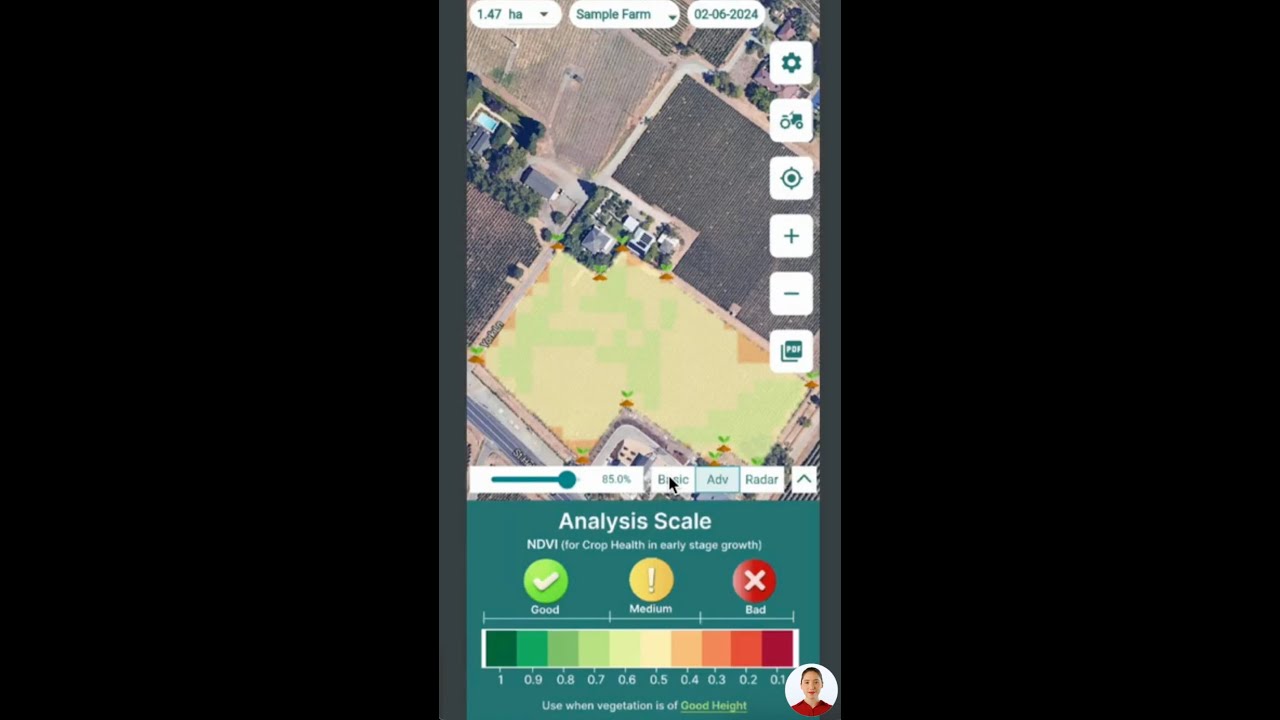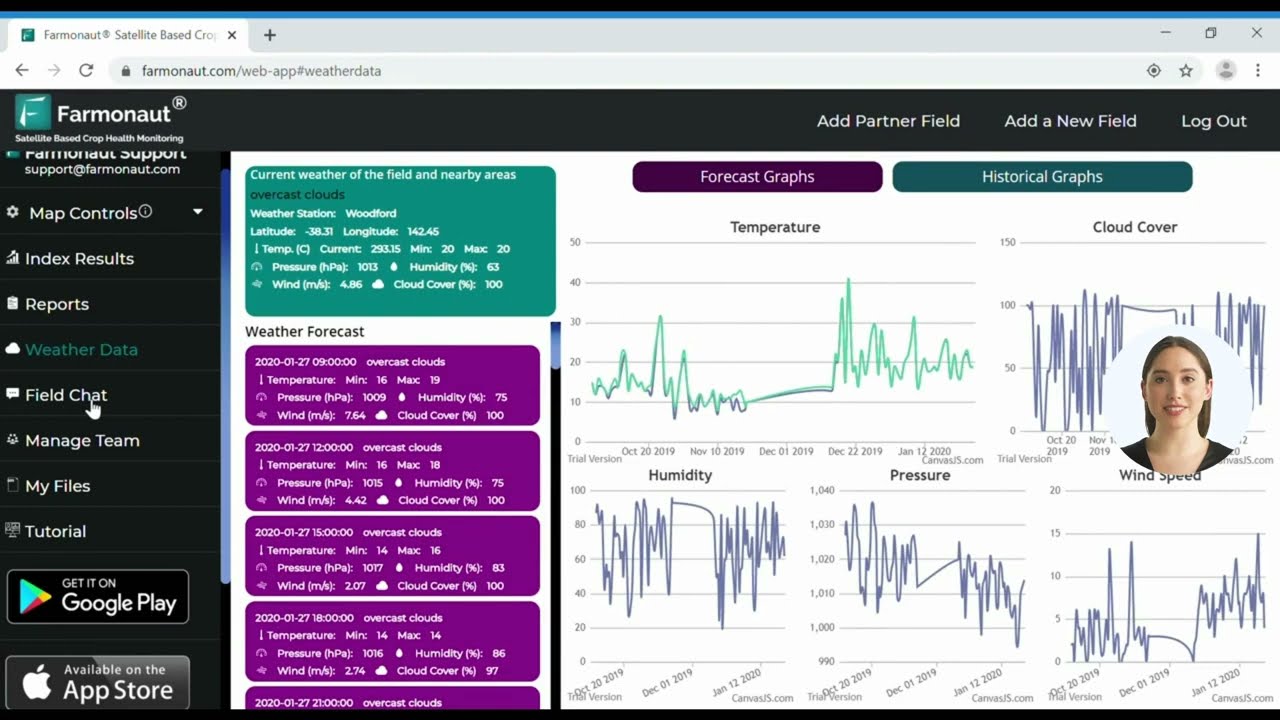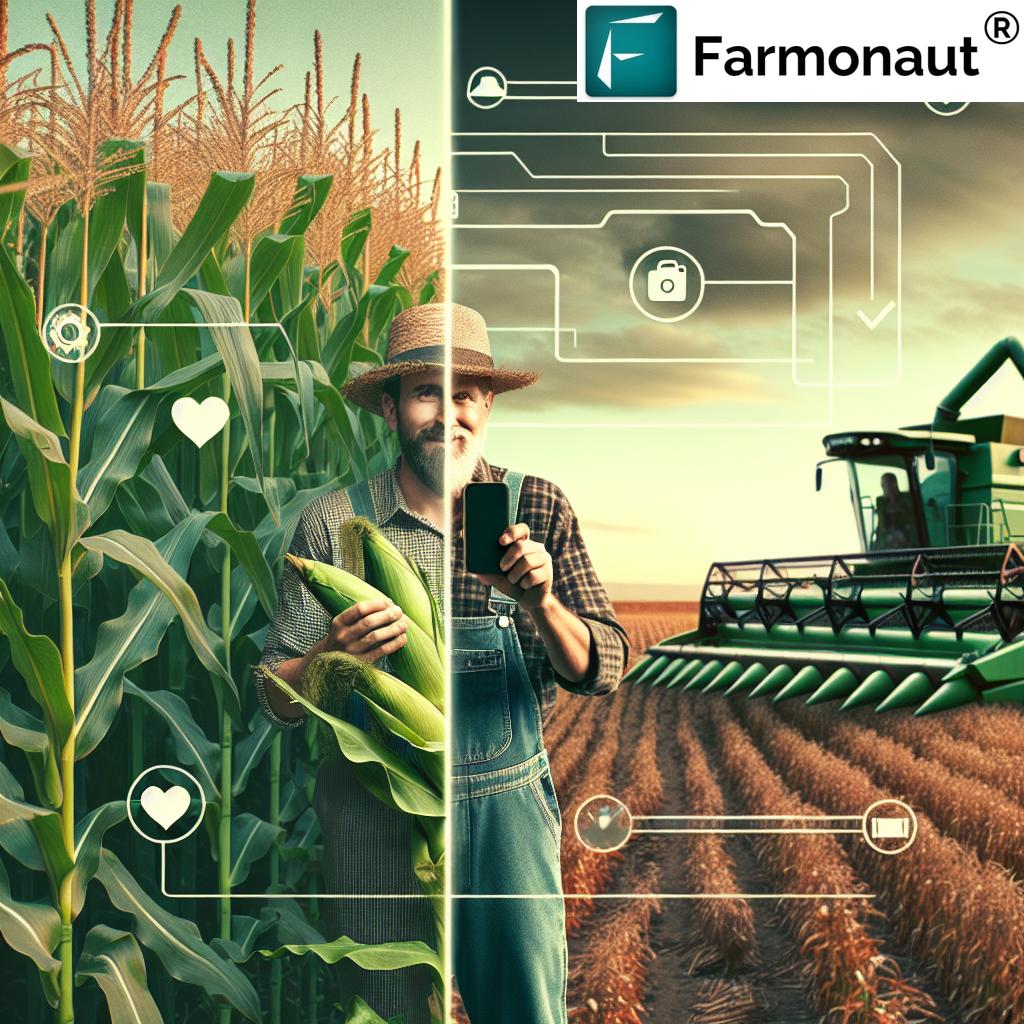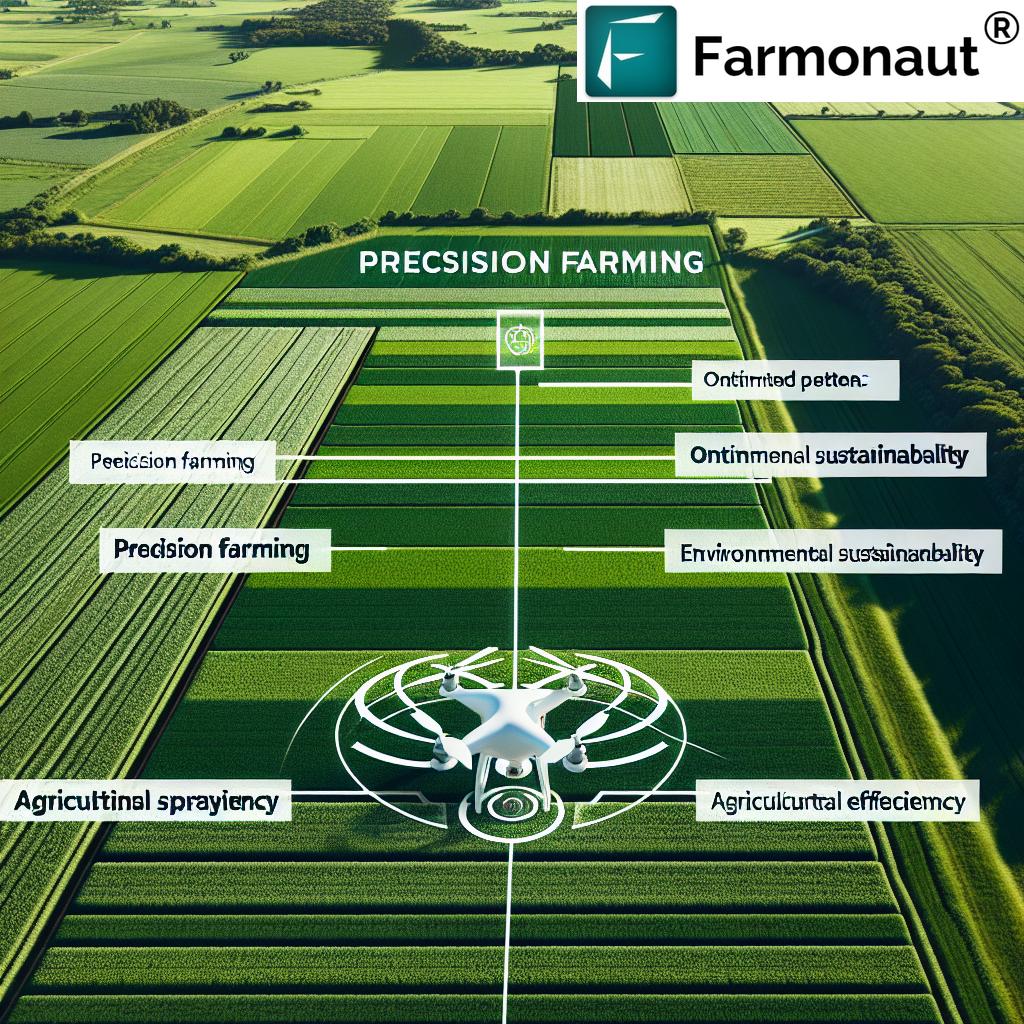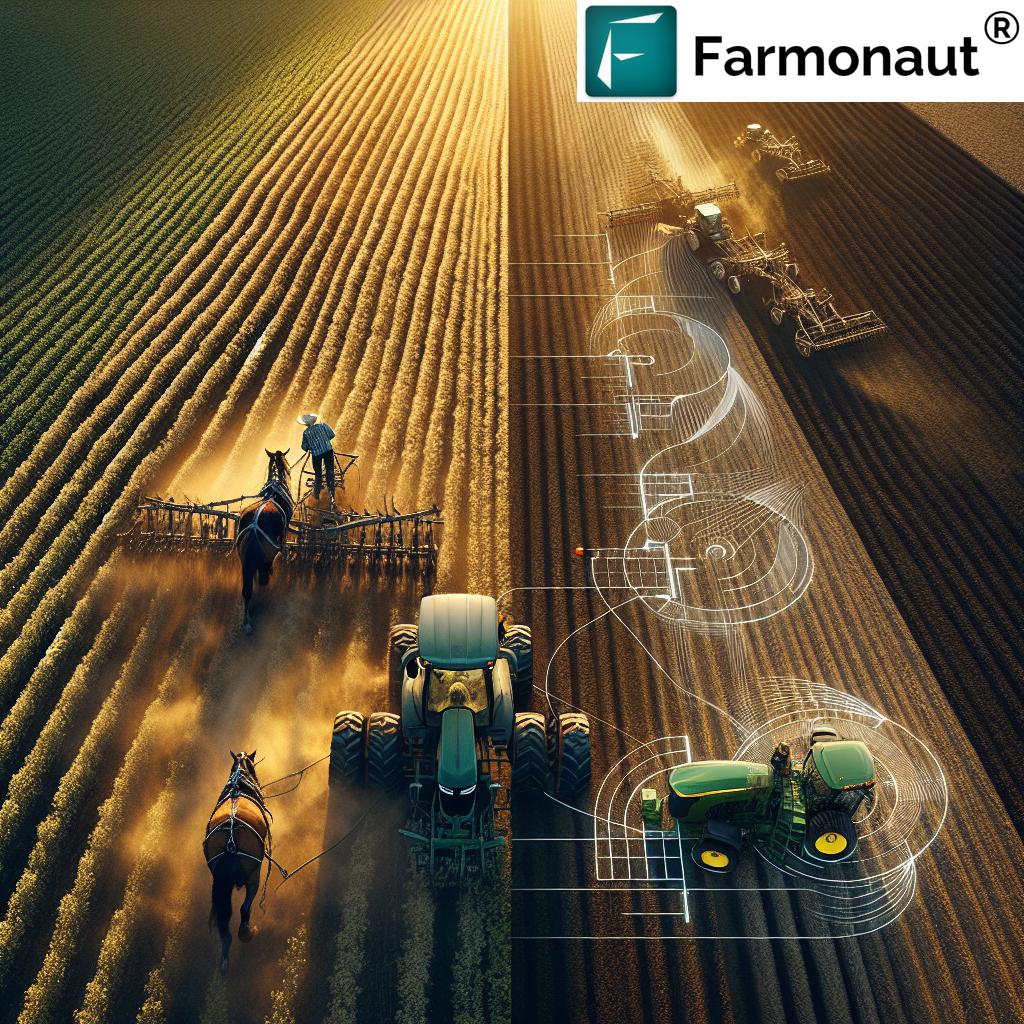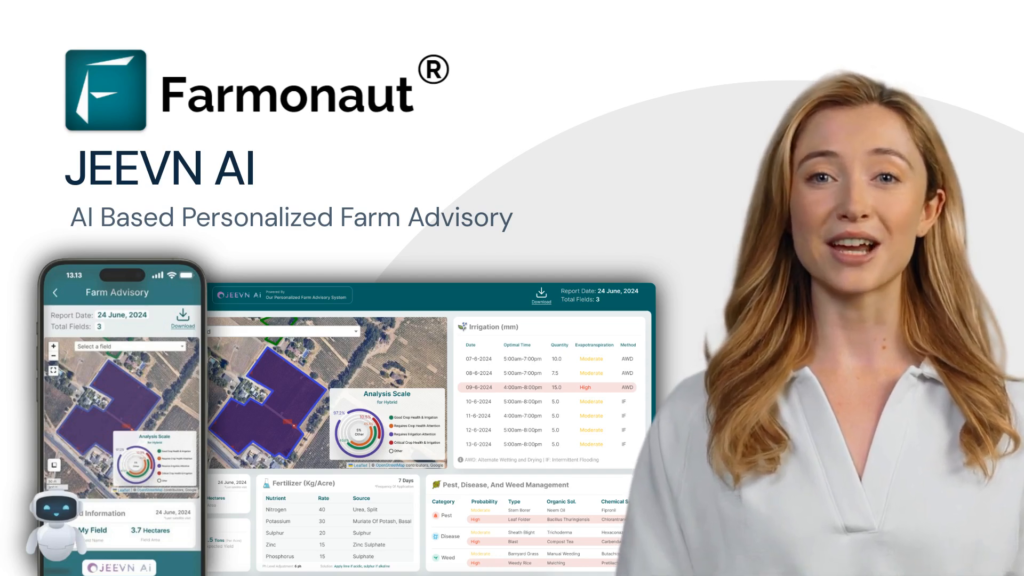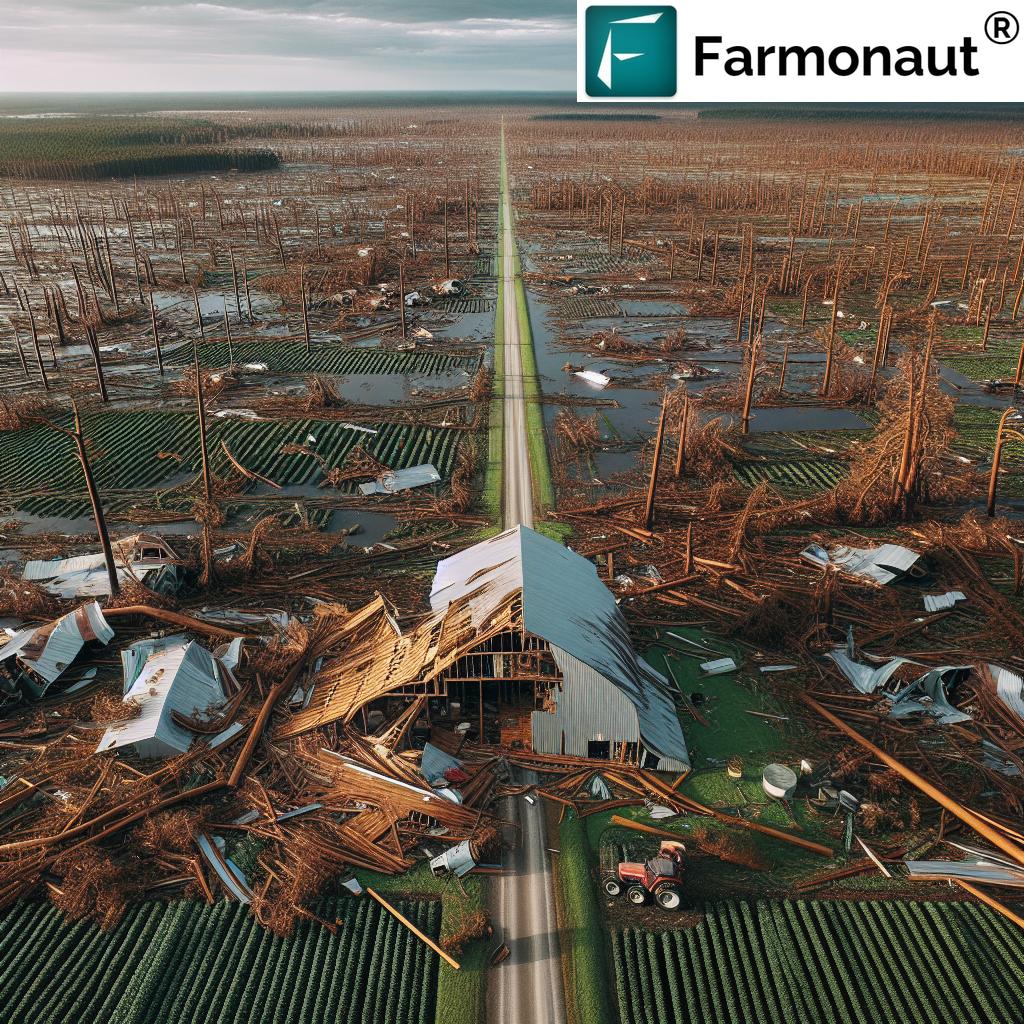Alabama Farmland Challenges: 5 Powerful Trends Shaping 2025
“In Alabama, urban sprawl reduced farmland by 12% between 2015 and 2024, impacting crop production significantly.”
Table of Contents
- Introduction: Alabama Farmland Challenges in 2025
- Regional Perspectives: Alabama vs. Nebraska Farmland
- Trend #1: Urban Sprawl & Its Impact on Alabama Farmland
- Trend #2: Water Availability for Crops
- Trend #3: Generational Farm Operations & Succession
- Trend #4: Crop Conditions in Nebraska and Alabama – A Comparative View
- Trend #5: Technology & Precision Agriculture Transformation
- Regional Farmland Trends Comparison Table
- Preserving Agricultural Heritage Amid Modern Pressures
- Farmonaut’s Edge: Affordable Satellite Solutions for Modern Farming
- FAQ: Alabama & Nebraska Farmland Challenges
- Conclusion: Outlook for 2025 and Beyond
Introduction: Alabama Farmland Challenges in 2025
Rural agricultural operations are experiencing a pivotal moment across the United States, and nowhere is this more evident than in the fields of Alabama and Nebraska. As contributors to the renowned DTN View From the Cab series, we have an insider’s perspective on what’s facing today’s farmers as they grow crops across distinct regions. The evolving mix of urban sprawl, generational dynamics, water challenges, and advanced technologies all shape our decisions and drive our agricultural businesses forward.
In this comprehensive guide, our aim is to unpack the top five trends shaping Alabama farmland challenges as we approach 2025. Drawing on current reports, regional operations, and real-world data, we’ll compare conditions between Alabama—particularly the vibrant, fast-changing areas like Madison, Limestone County, Morgan counties, and the Huntsville metropolitan area—and the expansive plains of Nebraska, epitomized by correspondents such as Stuart Sanderson and Ethan Zoerb.
From the struggle to retain agricultural heritage against the onslaught of commercial development, to the critical importance of crop health monitoring and the adoption of precision agriculture through tools like Farmonaut’s large-scale farm management solutions, we’ll explore in depth the industry’s top-of-mind rural issues, complete with actionable insights and practical recommendations. Let’s begin our agricultural road trip into the heart of Alabama farmland.
Regional Perspectives: What Sets Alabama and Nebraska Farms Apart?
Alabama and Nebraska serve as a study in regional differences in crop operations. This year, DTN’s View From the Cab zeroes in on Stuart Sanderson in Madison, Alabama—whose family farm, Henderson Farms, spans Limestone County and the expanding Huntsville area—and Ethan Zoerb of Litchfield, Nebraska.
The contrast between these two regions is stark, reflected in everything from average farm size to encounters with urban sprawl, climate, water issues, and generational transitions.
- Alabama farms grapple with rapid urbanization, the loss of leased parcels to developers, and the need to constantly adapt.
- Nebraska farms benefit from larger parcels and a relatively stable land base, but are highly sensitive to weather and water availability for crops.
“Nebraska farms are 2.5 times larger on average than Alabama’s, highlighting stark regional differences in agricultural operations.”
The Madison, Limestone, and Morgan counties region, particularly around Huntsville, typifies farming in Limestone County, Alabama—facing both the promise and the peril of being next to one of the South’s hottest technology and industry hubs.
Meanwhile, out on the Nebraska prairie, farms like Zoerb’s focus on maximizing the advantages that come with scale and a traditionally agricultural landscape, but must manage their own set of rural farming issues.
- Both Sanderson and Zoerb embody the values and challenges of generational farm operations—passing the torch while adapting to the fastest-changing decade U.S. agriculture has seen in years.
- This regional contrast is fundamental to understanding alabama farmland challenges and the trends affecting 2025.
Trend #1: Urban Sprawl & Its Impact on Alabama Farmland
The Expanding Huntsville Area: Losses, Developers, and the Battle for Parcels
No discussion of alabama farmland challenges is complete without mapping the relentless advance of urban sprawl. Across north Alabama, particularly in corridors stretching from Madison to Limestone County, we’re witnessing the conversion of prime agricultural land into subdivisions, distribution centers, and tech complexes linked to the Huntsville area’s booming industry.
- For every acre leased or acquired, another is lost to developers intent on reshaping rural landscapes for residential and industrial use.
- The U.S. Department of Agriculture and local farm bureaus have documented a 12% drop in farm acreage in Alabama over the last decade due to urban encroachment. This is among the sharpest declines in the country.
Why is this urban sprawl such a persistent threat?
The answer is multifaceted:
- Rising Land Values: Farmland near tech corridors is more valuable for developers than for farming, pricing out traditional operations.
- Competition for Parcels: Even multi-generational families like the Hendersons (with Stuart Sanderson) have to act quickly to secure new land when parcels become available, often offsetting losses of leased land to speculative buyers.
- Fragmented Farms: As continuous acreage becomes scarce, farmers are forced to manage increasingly disconnected fields, adding logistical and management headaches.
- Decline in Rural Community Services: With the population shifting towards urban corridors, support services for rural farmers—equipment dealers, co-ops, schools—face declining viability.
The Impact of Urban Sprawl on Agriculture: Beyond Numbers
Urban sprawl not only reduces land—it accelerates soil compaction, alters local water cycles, introduces invasive weeds (via landscaping), and increases the risks associated with rural traffic and biosecurity. For farmers in Madison, Limestone, and Morgan counties, this means:
- Reduced flexibility in planting rotations (corn and soybeans)
- Greater scrutiny from new non-agricultural neighbors (noise, dust, chemical usage)
- Pressure to sell or subdivide family land, threatening the very concept of generational farm operations
Product Traceability platforms add an important layer here by ensuring that what’s produced—even in shrinking areas remaining for agriculture—is transparently and securely tracked. This helps build consumer trust as urban populations demand greater transparency in food origins.
Case Study: Distribution Centers vs. Corn & Soybeans Fields
North Alabama’s economic growth is both a blessing and a challenge. Many farmers near the Huntsville area are approached by developers eager to convert row-crop ground into parking lots and warehouses servicing e-commerce and tech expansion. In the short term, this might bring revenue. In the long term, however, it can decimate a family’s ability to pass on a viable operation.
Finding the right balance is a challenge every farm must approach strategically—a battle over more than just profits, but the future of regional agriculture.
Farmonaut’s web, Android, and iOS apps bring advanced, satellite-driven insights right to the farm—making it easier for Alabama and Nebraska farmers to monitor evolving crop health, soil condition, and loss of acreage in real time.
For developers and agtech providers: Farmonaut’s API and API developer documentation enable seamless integration of precision agriculture features into a multitude of apps and services, boosting capabilities across the agri-food supply chain.
Trend #2: Water Availability for Crops – The New Battleground
How Alabama and Nebraska Address Water Scarcity and Abundance
Water, or the lack thereof, remains a universal challenge for farmers. Both Alabama and Nebraska have their own water availability for crops issues, but they experience them differently. While Alabama can be subject to erratic rainfall and periodic droughts especially during critical stages of corn and soybeans farming, Nebraska is inseparable from irrigation, aquifer management, and growing debates over sustainable drawdowns.
The teams behind Henderson Farms and Zoerb’s Nebraska operations both cite water as “top of mind”—highlighted recently in DTN’s field reports and aligned with the broader agricultural road trip theme for this series.
- Alabama: Vulnerable to summer drought, thunderstorms, and runoff issues as urban development changes local watersheds.
- Nebraska: Relies heavily on center-pivot irrigation pulling from the vast Ogallala Aquifer, facing persistent drought and regulatory scrutiny.
Key Tactics for Managing Water Availability for Crops
- Monitoring soil moisture and forecast data—precision systems that detect stress early.
Farmonaut’s crop advisory platform leverages AI and satellite data to help guide irrigation, manage watering schedules, and optimize resources. - Deploying real-time satellite imagery to watch for crop heat stress or emerging signs of drought. NDVI analyses offer visual, accessible monitoring for any farm operator.
- Switching crop rotations to include drought-tolerant varieties and avoid crops vulnerable to water fluctuations.
- Engaging in regional water policy discussions to help shape best practices. This is especially crucial for Nebraska as aquifer rules tighten.
Modern AI-based platforms also help capture, store, and analyze years of weather and field data to create predictive models—meaning better preparedness, smarter insurance purchases, and potentially, optimized yields despite tough conditions.
Beyond the immediate on-the-ground decisions, this water battle shapes long-term investment in irrigation equipment, influences land values, and often dictates the type (and profitability) of crops that can be grown in either region.
Trend #3: Generational Farm Operations – Adapting for the Next Season
Passing the Torch: Maintaining the Heritage in Rural Counties
Preserving agricultural heritage is a cornerstone for both Alabama’s and Nebraska’s farms, especially as multi-generational families like the Hendersons (Sanderson’s relatives) and the Zoerbs navigate structural changes and rural farming issues.
- Generational transitions can be economically and emotionally fraught, as the farm passes from parent to child or among siblings and cousins.
- Land parcels are sometimes split, causing operations to fragment and adding complexity to farm management.
- Younger generations often balance an agricultural life with modern careers or side interests, such as those held by the DTN field correspondents (hunting, golf, and agri-tech advocacy).
- When urban sprawl pushes property values up, family members not on the farm may advocate for sale or development. This tension can threaten the core values of generational farming.
Modern farm management technology plays a critical role here too. Digital fleet, resource, and field monitoring tools can reduce the friction of passing knowledge and operational data between generations. They also offer dashboards and transparency that foster greater participation from family members with off-farm jobs.
With change accelerating, every season is vital for ensuring continuity and productivity—both for the land and for the communities these farms support.
Did you know? Farmonaut’s Fleet Management tools help Alabama and Nebraska farms optimize machinery usage, track logistics, and ultimately reduce costs—ideal for multi-generational farms with multiple operators managing scattered parcels.
Trend #4: Crop Conditions in Nebraska and Alabama – A Comparative View
Corn and Soybeans Farming: Seasonality, Soil, and Resilience
At the heart of both Alabama and Nebraska operations are corn and soybeans farming. Yet, regional differences in crop operations result in different challenges and opportunities for each area’s farmers.
- Alabama: Generally shorter growing seasons, higher humidity, risk of fungal disease, and variable soils. Frequent weather swings can threaten plantings at pivotal times.
- Nebraska: Longer days, less humidity, highly fertile soils derived from glacial deposits. However, late frosts or heatwaves and irrigation requirements impose their own risks.
Satellite-based crop health monitoring gives us a critical advantage. Through tools like NDVI and real-time phenological analysis, we can observe:
- Status of emergence and canopy closure
- Water stress and nutrient deficiencies
- Impact of pest outbreaks or disease hot spots
These insights are invaluable as they allow both proactive decision-making and transparent reporting to landlords, lenders, and crop insurance providers. Farmonaut’s crop loan and insurance service even leverages this data for risk assessment and monitoring—benefiting alabama and nebraska operations alike.
2025 Crop Outlooks: What to Watch in the Field
- Pre-season soil moisture can be the difference between record yields and difficult growing conditions: watch spring rainfall reports.
- Pressure on input prices (fertilizer, fuel, seed) means optimization is essential—precision management for every acre counts.
- Ongoing urban sprawl can restrict or narrow applications of fertilizers and crop protection products—compliance calls for diligence and robust records.
Regional Farmland Trends Comparison Table
| Trend/Challenge | Alabama (Estimated Data) | Nebraska (Estimated Data) | Comments/Insights |
|---|---|---|---|
| Average Farm Size (acres) | ~200 acres | ~500 acres | Nebraska farms are typically larger due to less urban pressure, more contiguous land. |
| Top Crops by Area | Corn, soybeans, cotton | Corn, soybeans, wheat | Both prioritize corn and soybeans farming; Alabama has more cotton, Nebraska more wheat. |
| Impact of Urban Sprawl (% Farmland Lost) | 12% (2015–2024) | 3% (estimated) | Alabama faces far greater losses due to the growth of urban/suburban areas. |
| Average Crop Yield (bushels/acre) | Corn: 150, Soybean: 45 | Corn: 180, Soybean: 55 | Better soils and climate bolster Nebraska yields, but water is crucial for both. |
| Generational Succession Rate (%) | ~35% | ~45% | Urban sprawl and fragmented land ownership pressures succession in Alabama programs. |
“Nebraska farms are 2.5 times larger on average than Alabama’s, highlighting stark regional differences in agricultural operations.”
Trend #5: Technology & Precision Agriculture – Powering the Future
Satellite Imagery, AI, and the Digital Revolution in the Field
To thrive under the weight of these challenges, farmers across Alabama, Nebraska, and beyond are embracing a new toolkit: satellite-based analytics, AI-driven recommendations, blockchain traceability, and integrated resource management platforms.
- Satellite-Based Crop Health Monitoring: Instant access to NDVI, soil moisture, and stress maps—critical for decision making in both fragmented Alabama fields and broad Nebraska operations.
- AI Advisory Services: Platforms like Jeevn AI provide real-time, actionable advice pairing satellite data with agronomic expertise, boosting growers’ efficiency.
- Blockchain Traceability: Adding trust and transparency to Alabama and Nebraska supply chains, especially as customers demand proof of origin and sustainable practices.
- Fleet & Resource Management: Making it possible for generational farms to optimize logistics, track machinery use, and reduce waste—especially vital in counties where land is increasingly fragmented.
- Carbon Footprinting: Modern sustainability pressures require accurate, real-time assessment of emissions—now at the fingertips of every farm operator through Farmonaut’s Carbon Footprinting tools.
Adopting such tools allows our operations to make decisions faster and with greater certainty. In areas where weather, urban pressure, and generational change converge, that can be the difference between success and loss.
Farmonaut’s platform is a leader in this space, offering:
- Satellite-guided real-time crop health monitoring
- AI-powered crop management and advisory systems for better resource use and risk reduction
- On-demand blockchain-based traceability for product transparency
- Easy-to-use Apps and web tools for individual farmers and multi-thousand-acre agribusiness alike
Preserving Agricultural Heritage Amid Modern Pressures
The legacy of Alabama and Nebraska agriculture rests on our ability to adapt and innovate without losing track of everything built by generations before us. From the fields of Limestone County to the prairies around Litchfield, the goal is the same: strong, sustainable, and resilient operations that can withstand:
- The lure (and risk) of rising land prices and urbanization
- Water shortages and the unpredictability of climate
- The need for seamless, family-centered generational transfer
- Changing regulatory landscapes and consumer demands
These conditions require modern solutions. With Farmonaut’s affordable, satellite-powered technologies, access to big data and actionable insights is no longer the preserve of the largest enterprises—it’s available to every operation.
Traceability, carbon tracking, and plantation management (such as those highlighted in Farmonaut’s traceability platform) aren’t just buzzwords—they’re key pillars for future-proofing our regional farm businesses, supporting brand reputation, meeting new regulations, and achieving real transparency all along the food chain.
Farmonaut’s Edge: Bringing Precision Ag to Every Farm
As farming in Alabama, Nebraska, and nationwide grows ever more complex, Farmonaut stands out as a catalyst for democratizing agtech.
- Affordability & Accessibility: No expensive hardware required—just an app and the power of satellites & AI.
- Device Agnostic: Works seamlessly on Android, iOS, browser, or through API for customized business solutions.
- Real Time, Actionable Data: Monitor, predict, and improve conditions—whether battling drought, urban encroachment, or shifting generational roles.
- Powering Sustainability: Integrated carbon footprinting and resource management help ensure that thriving today doesn’t come at tomorrow’s expense.
- Enhancing Loan & Insurance Access: Satellite-based verification via Farmonaut’s insurance and lending support streamlines financing for both family farms and large agribusiness.
Whether your operation is in Decatur, Litchfield, Madison, or the Huntsville metro region, Farmonaut’s evolving set of precision ag features is designed to give farmers the upper hand against the trends shaping 2025 and beyond.
FAQ: Alabama & Nebraska Farmland Challenges
1. What are the main Alabama farmland challenges heading into 2025?
The biggest Alabama farmland challenges for 2025 include urban sprawl leading to loss of land, water management issues due to changing rainfall patterns, the need to preserve generational operations amid rising land values, and the adoption of new agricultural technologies for resilience and efficiency.
2. How does urban sprawl impact farming in counties like Limestone, Madison, and Morgan?
Urban sprawl in these counties drives up land prices, causes fragmentation of farm parcels, adds operational and regulatory difficulties, and increases pressure to sell or develop land instead of keeping it for farm use.
3. What are the main differences between Alabama and Nebraska farms?
In general, Nebraska farms are larger and less fragmented, often have better soils and higher yields, but are more reliant on irrigation. Alabama farms are smaller, more susceptible to urbanization, and face more humidity-based crop disease challenges.
4. How can technology help address rural farming issues?
Technologies like those from Farmonaut—satellite crop monitoring, AI-based advisory, fleet management tools, and blockchain traceability—help farmers optimize resources, reduce input costs, monitor crop health, and build resilience against changing environmental and economic factors.
5. How can farms maintain their generational legacy under current pressures?
By adopting modern management platforms, ensuring transparent record-keeping, optimizing land use, and embracing sustainability, family farms can both preserve their traditions and stay competitive in a rapidly changing environment.
Conclusion: Alabama Farmland – Looking to 2025 and Beyond
The journey through Alabama farmland challenges, in the shadow of urban sprawl and the pressure of generational transfer, is one we all share as American farmers. But armed with the right data, collaborative innovation, and a willingness to adapt, the future is far from bleak. Our ability to grow, preserve agricultural heritage, and run sustainable, profitable operations will depend more than ever on our readiness to leverage new tools, strike a balance with development, and put the land to its highest use—for today and for the next generation.
As trends continue to push the boundaries of what’s possible (and permissible) in Decatur, Madison, Huntsville, and Litchfield, let’s ensure we’re building farms that endure—and thrive. Modern solutions like Farmonaut are not just options; they’re essential allies.
Start your journey with affordable precision ag:

Discover more:
- 🌱 Fleet Management
- 🌾 Large-Scale Farm Management
- 🌳 Crop Plantation Advisory Tools
- 🟢 Carbon Footprinting Solutions
- 🔗 Traceability for Transparency
- 🌾 Crop Loan & Insurance
Alabama and Nebraska may be different at a glance, but the challenges, issues, and opportunities uniting American agriculture are the foundation for a resilient and innovative future. Let’s grow together – smarter, faster, and with our roots still firmly in the rich soils of our heritage.



